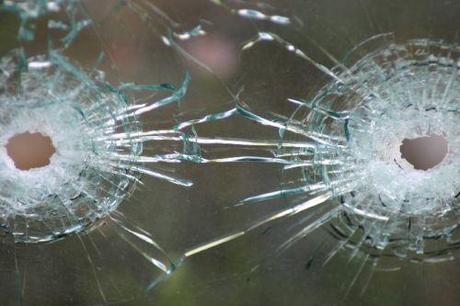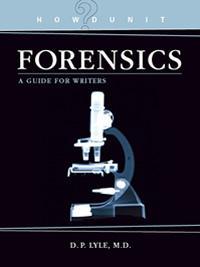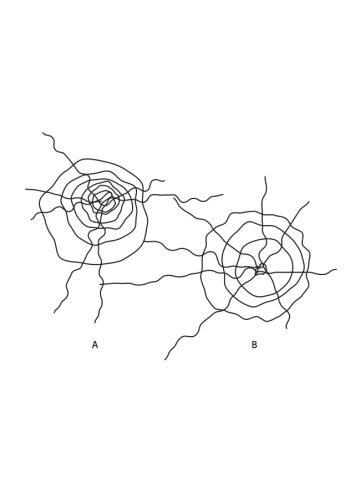Crime scene reconstruction is an art and a science. If investigators can determine what happened, to whom, when, where, and how, they are well down the road to solving the case. Ballistic trajectories are often part of this analysis.

What was a bullet’s direction of travel? Was the gun fired inside the house or outside? Better yet, what was the speed of the bullet? Directionality can refute or support suspect alibis and witness statements and bullet speed can narrow the type of weapon used when the bullet itself is not available.
It has been known for many years the glass fracture patterns can reveal directionality but now there seems to be a method for determining the projectile’s speed. Very cool technology.

From HOWDUNNIT: FORENSICS:
The lab might also be asked to determine how and why a glass object, such as window, fractured. The pattern of the breaks and cracks seen in a window give the examiner a clue as to the speed and direction of the impact; this helps him determine what object likely caused the break. Was the object moving at a low velocity, such as a rock or fi st, or at a higher rate, such as a bullet or explosive shrapnel?
Cracks in windows and other flat plates of glass tend to be radial and concentric.
Radial cracks spread outward from the point of impact in a spoke-like configuration. Concentric cracks are a series of progressively larger circles around the point of impact. Overall, the cracked window might look like a spider web.
Certain characteristics of a break allow the examiner to determine the direction from which the impact came. This can be critically important in crime scene reconstruction. Did the bullet penetrate the window from outside in, or was it fired from within the house? Did a perpetrator break the window and enter, or did someone within the house break the window in an attempt to stage the scene and make a domestic homicide look like a breaking-and-entering murder?
Stress-fracture lines known as conchoidal lines, which radiate away from the impact site (see Figure 15-3), can help make this determination. Viewed through the thickness of the glass, these lines tend to curve out and away from the point of impact. Looking more closely at these conchoidal fractures, smaller lines that radiate in a perpendicular direction from edges that face away from the impact site may be seen. These are called hackle marks.

Figure 15-3: Conchoidal fracture lines. Conchoidal fracture lines tend to curve out and away from the point of impact. Hackle marks also reveal the direction from which the force was applied.
If a projectile such as a bullet strikes a window and penetrates it, but does not completely shatter it, it may leave a hole with or without surrounding fracture lines. On the side of approach, the bullet creates a rather clean hole, while on the opposite side, a small cone-shaped plug of glass is forced out. Simple visual inspection of the impact site reveals the projectile’s direction of travel.
If multiple bullets or other projectiles fracture the glass, it is often possible to determine the order in which they struck. Typically, the radial fractures caused by the second object do not cross those of the first. That is, they end when they encounter glass that is already fractured (see Figure 15-4).

Figure 15-4: Intersecting fracture lines. Impact radial fracture lines end abruptly at those produced by a previous impact. In this case, fracture B followed fracture A.
These findings can be extremely important in corroborating or refuting suspect and witness statements and in reconstructing the events surrounding the crime. They can also be useful in assigning culpability.
Let’s say two gang members decide to do a drive-by shooting of a rival gang member while he is sitting in his car. The driver fires through the victim’s car window and begins to drive away. His accomplice then takes the gun and fires again. Both bullets pass through the window and strike the victim, one in the shoulder and the other in the head, killing him. Since both bullets came from the same gun and both men have gunshot residue on their hands (see Chapter Sixteen: Firearms Examination, “Gunshot Residues”), which of the shooters was the actual killer? Was it the first bullet (the driver) or the second (the passenger)? The dilemma is resolved when analysis of the fracture lines in the victim’s car window reveal that the second bullet was the killing shot.
